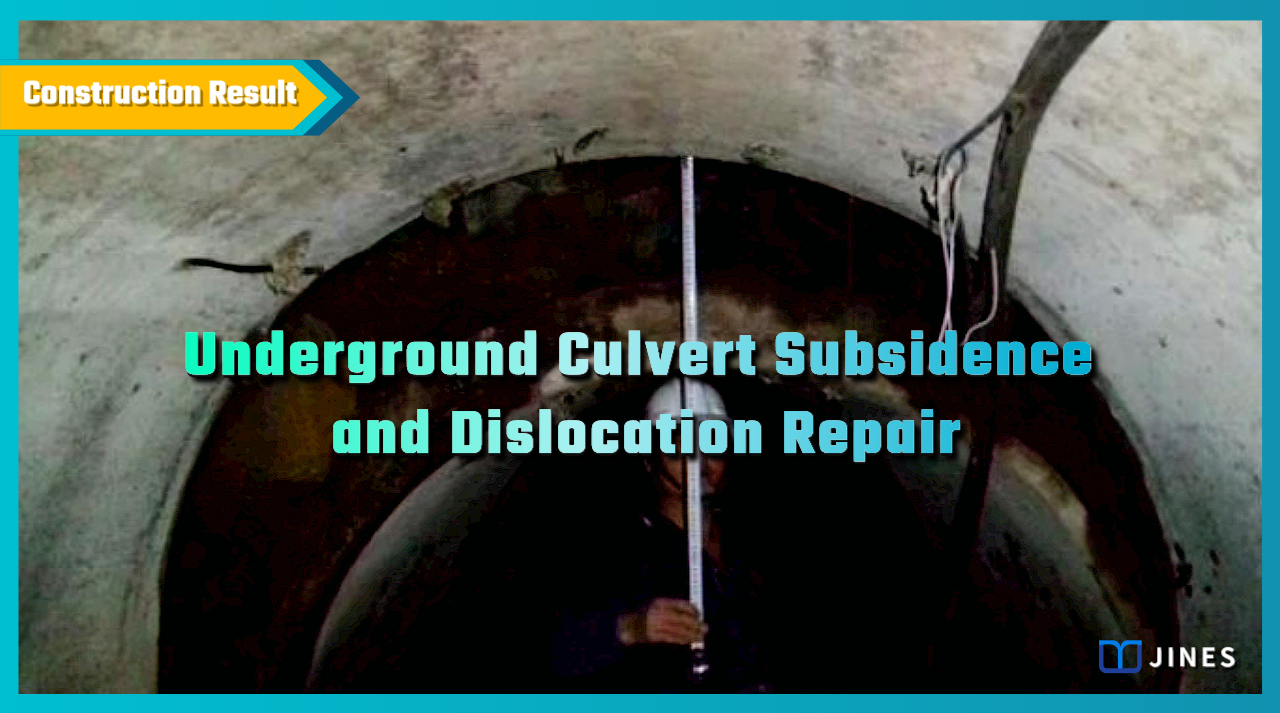
UNDERGROUND CULVERT SUBSIDENCE AND DISLOCATION REPAIR
Grouting and structural reconstruction technology for underground pipeline
1. Project Background
An underground drainage culvert near the MRT caused the dislocation of a pipeline interface due to soil subsidence and other natural events. The severely displaced section was about 10m long and consisted of four 2.5m long D1800RCP pipes.
According to the on-site investigation, the differential subsidence of the interface was as high as 9~37cm, which might not have been able to provide the originally designed wastewater discharge function. Due to the fact that the culvert was located at an intersection, vehicle traffic was frequent.
There were many public pipelines buried above the culvert, so it could not be excavated for repair.
In order to avoid flooding in the rainy season and long-term seepage of general wastewater causing hollowing, the maintenance unit invited experts from the industry to develop solutions, and recruited professional contractors for planning and works.
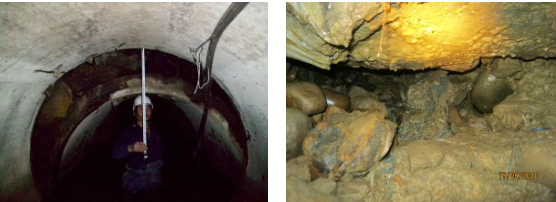
―
2. Solution
According to the results of the on-site investigation, the planning unit proposed two schemes for pipeline jacking and structural reconstruction. After consideration of engineering conditions, structural analysis, and risk and value assessment, the interface between the box culvert and the pipeline was found not to have suffered serious subsidence.
The original design function could be restored by excavation at the top and filling below. It was decided to adopt underpinning support from below pipeline and arch stratum reinforcement above and a combined structural reconstruction plan to restore the function of the drainage culvert.
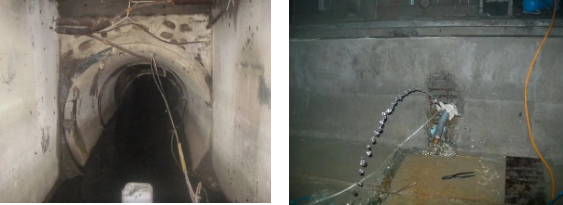
―
3. Works Design
The surroundings of the pipeline in the works area was a soft clay layer with high water content. The thickness of the covering layer above the culvert was about 2.7m~3.0m, mainly backfilling concrete blocks, pebbles and miscellaneous soils.
In order to not affect the drainage cross-sectional area, not change the drainage slope, not cause road subsidence above, and not affect the traffic, etc., the design was based on limiting to reconstruction of the pipeline structure.
The main related repairs were set out as follows:
(1) Grouting for pipe underpinning. Using cement grout with W/C=1, in a staggered configuration of 1m depth, 1.25m row spacing, and 5 rows of holes, the weak zone of the stratum below the pipeline is to be filled, compacted and reinforced;
(2) Top arch stratum reinforcement. In order to give the upper stratum self-sustaining force after the top arch is excavated, Tipor-02 micro-expanded polyurethane resin with high strength and short curing time is to be used to fill inclined holes with a depth of more than 1m above the top arch. Also use to fill the gaps between concrete blocks and pebbles; and to consolidate the outer backfill layer of the top arch to form a top safety screen to prevent soil and rocks from falling;
(3) Excavation and reconstruction of the top arch. Within 180 degrees of the top arch, the old pipe wall to be knocked out in sections and excavated outwards. The excavation length is 0.5m and the depth is 5~40cm. After the excavation of each section is completed, and after rebars are overlapped and spot-welded wire mesh is laid, the steel formwork to be installed and non-shrink cement poured.
(4) Fill the differential subsidence space below the pipeline. After the reconstruction of the top arch is completed and the site // is cleaned up, reinforcement setting up, rebar binding and concrete pouring are carried out on the invert pipe wall. After the concrete is cured, the surface is roughened, and then the details of the second-degree arc invert are poured and trimmed;
(5) The pipeline interface is strengthened. The annular stainless steel plate is installed at the interface of the seriously dislocated culvert pipe to improve the interface stiffness and the ability to resist settlement and displacement;
(6) Comprehensive inspection and repair. Perform box culvert and pipeline backfill grouting, crack repair and water leakage plugging.
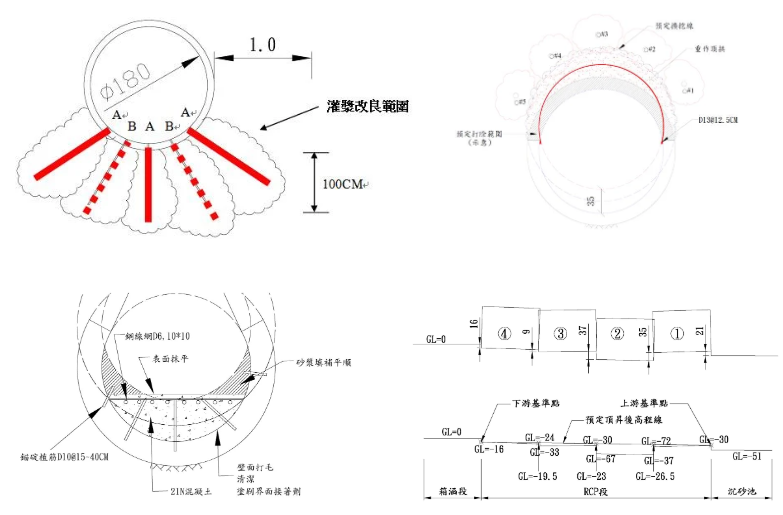
―
4. Works Process
The works area was located in a place with frequent traffic, and the engineering properties were also relatively special. The works process needed to be extra careful in avoiding hazards or causing industrial safety problems.
In the event of heavy rainfall, construction materials and equipment also needed to be evacuated urgently to restore the drainage function. All information and contingency measures during the implementation period were carefully planned in advance.
In addition to the works:
(1) Setting up of pumping and water blocking equipment. This project used the sand settling tank at the front end of the culvert pipe as a water collection well to pump and discharge the regular domestic wastewater to the back end box culvert of the section being repaired.
(2) Installation of monitoring systems on the surface and in the pipeline, including the road subsidence point and the elevation measurement in the pipeline, etc.
(3) Measurement and stakeout in the pipeline. Used the elevation of the box culvert interface at both ends of the damaged pipeline to stake out, and correct the drainage slope; These three tasks are relatively rare in general grouting reinforcement projects.
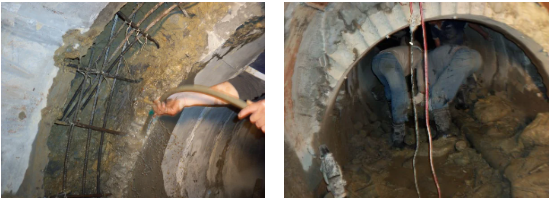
―
5. Results
This project was executed in the limited space of the pipeline.
The process took into account many important tasks such as traffic control, surface subsidence/uplift monitoring, and restoration of wastewater discharge function during rainfall. The execution process was relatively complicated.
With the cooperation of the organizer and contractors, the restoration work was completed within one month. After many trials of heavy rain, the culvert pipe design function was shown as fully restored.
The subsidence and dislocation restoration of the underground culvert pipe was successfully completed.
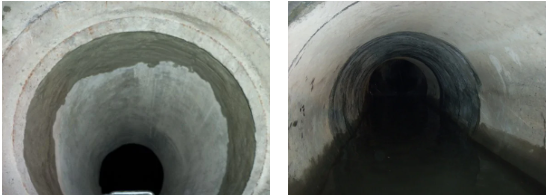
―
Underground Culvert Subsidence and Dislocation Repair
將下載檔案寄至:
・More Construction Result Sharing
Contact us:+886 2769-2355
Copyright ©Jines Construction Co.,Ltd